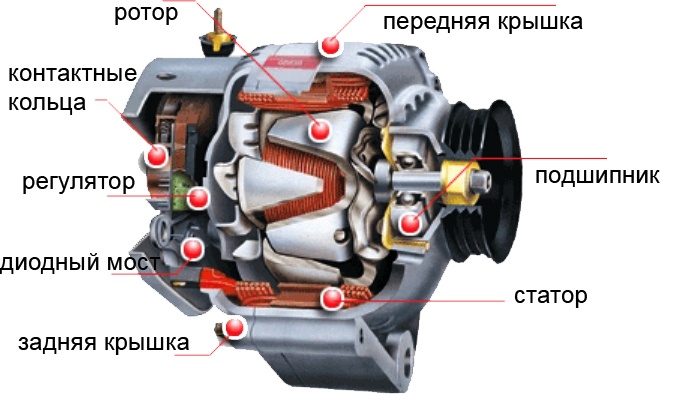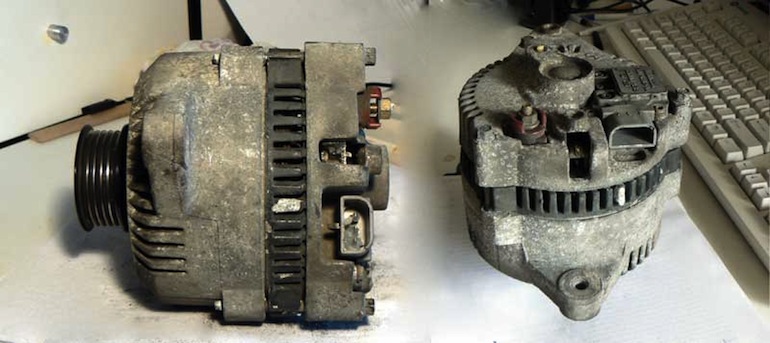
Car generator device and principle of operation
The generator is an integral part of the device of any car. The main task of this unit is the production of electricity to provide it with the entire system of the car and recharge the battery. The rotational energy of the crankshaft is converted into electricity.
The generator is connected to the crankshaft using a belt drive - the generator belt. It is put on the crankshaft pulley and on the generator pulley, and as soon as the engine starts and the pistons begin to move, this movement is transferred to the generator pulley and it starts to produce electricity.

How is current generated? Everything is very simple, the main parts of the generator are the stator and the rotor - the rotor rotates, the stator is a fixed part fixed to the inner casing of the generator. The rotor is also called the generator armature, it consists of a shaft that enters the generator cover and is attached to it with a bearing, so that the shaft does not overheat during rotation. The generator shaft bearing fails over time, and this is a serious failure, it must be replaced in a timely manner, otherwise the generator will have to be completely changed.
One or two impellers are put on the rotor shaft, between which there is an excitation winding. The stator also has a winding and metal plates - the stator core. The device of these elements may be different, but in appearance the rotor may resemble a small cylinder put on a roller; under its metal plates there are several coils with a winding.
When you turn the key in the ignition switch half a turn, voltage is applied to the rotor winding, it is transmitted to the rotor through the generator brushes and slip rings - small metal bushings on the rotor shaft.
The result is a magnetic field. When rotation from the crankshaft begins to be transmitted to the rotor, an alternating voltage appears in the stator winding.

The voltage is not constant, its amplitude is constantly changing, so it needs to be equalized accordingly. This is done using a rectifier unit - several diodes that are connected to the stator winding. An important role is played by the voltage regulator, its task is to maintain the voltage at a constant level, but if it starts to increase, then part of it is transferred back to the winding.
Modern generators use complex circuits to keep the voltage level constant under all conditions. In addition, the basic requirements for the generator set are also implemented:
- maintaining the stable operation of all systems;
- battery charge even at low speeds;
- maintaining the voltage within the required level.
That is, we see that although the current generation scheme itself has not changed - the principle of electromagnetic induction is used - but the requirements for current quality have increased to maintain stable operation of the on-board network and numerous consumers of electricity. This was achieved through the use of new conductors, diodes, rectifier units, and the development of more advanced connection schemes.
Video about the device and the principle of operation of the generator
Loading…